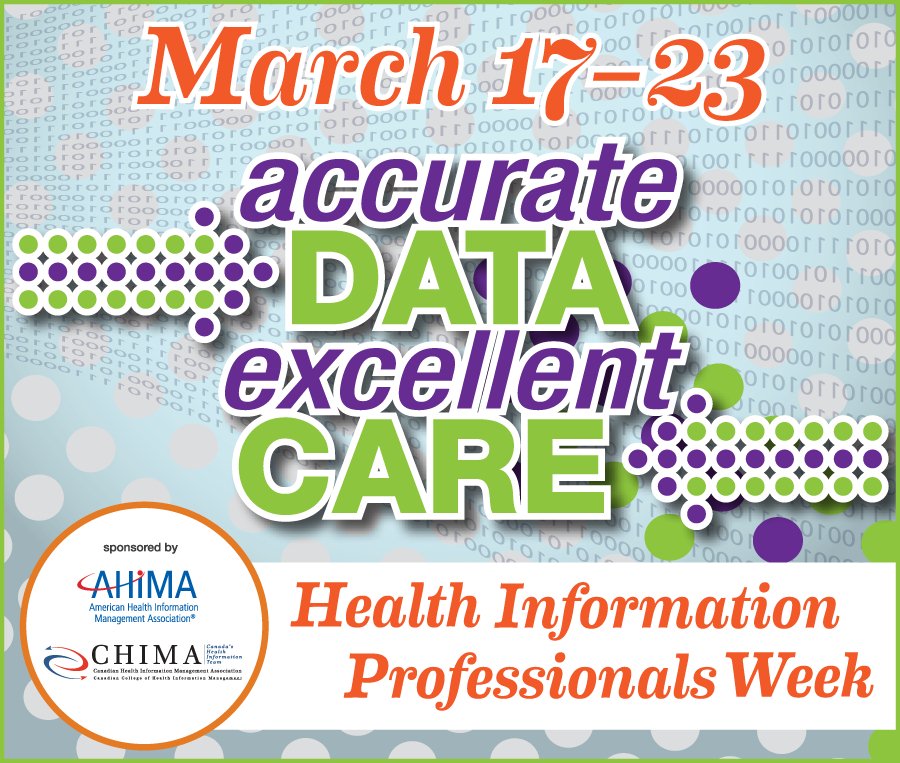Every day, the work of HIM professionals ensures health providers and organizations have the accurate information they need to provide excellent care.
Whenever you see clinical data being presented at a meeting, cited in a health agency report or quoted in the media, it is likely the end product of HIM teams working behind the scenes to capture this information and make it accessible.
Health Information Management (HIM) professionals across North America are celebrating Health Information Professionals week on March 17 to 23, 2013. We celebrate and recognize the contributions of our Lower Mainland HIM professionals.
“Congratulations to the HIM staff on the work that you do everyday. It is integral in the support of excellent patient/client care,” said Sharon Baigent, board director, Canadian Health Information Management Association; director, Records Management & Registration, West LM HIM. “It’s a pleasure to acknowledge you during HIM week.”
Learn about each HIM professional’s unique, important role
Lower Mainland HIM has 4 portfolios:
1.) Coding
Coders (Classification specialists) Ever heard of terms like case mix groups (CMG), resource intensity weight (RIW) and expected length of stay (ELOS)? Coders are responsible for classifying clinical data into these kinds of categories.
The coded data is reported to provincial and federal health agencies like Canadian Institute of Health Information (CIHI) and Ministry of Health. The data is used in many ways – like observing clinical trends, determining the complexity of patient populations, and monitoring clinical outcome by hospital or physician group.
Physician Documentation specialists work closely with physicians to ensure documentation is optimal for continuity of care, data collection and chart review.
Data Quality specialists and Coding System Application coordinators work closely with coders to ensure coded data is of the highest standard. They also work closely with clinical groups as an expert resource to them regarding understanding coded data relating to national and provincial standards.
Recently, they have been leading the data mapping work for Electronic Health Record (EHR). This involves mapping various classification systems with the health authority’s clinical system codes t clinical integration of coded data.
Data analysts work closely with groups like Decision Support Services to clinical groups on various projects and initiatives involving health information data. For example, the National Ambulatory Care Reporting System (NACRS) for Emergency Department was recently, the data analysts work closely with ED to ensure data compliance and data capture are optimal.
2.) Record Management
Health Record administrators (HRAs) provide support and expertise to our sites and programs to ensure records management in these sites support excellent client care. They also help standardize and streamline processes across health organizations. At rural sites, HRAs often provide operational leadership, ensuring creation, completion, and provision of patient/client records and information for care.
Scanning and Clinical Forms System Application coordinators work closely with clinical groups to ensure paper forms can be generated electronically (form design) and scanned digitally for optimized electronic viewing. This work is integral to clinical documentation and coded data.
HIM Clerks ensure records are compiled, completed, stored appropriately and provided in a timely manner for patient care and other purposes.
Release of Information clerks provide information to authorized requesters for continuing care and other purposes.
3.) Registration
Client identity analysts ensure patients are registered correctly when presenting for care. Their work ensures the right information is associated with the right patient. This work is critical in ensuring patient safety.
Registration clerks are the first contact for many patients and getting them registered correctly and promptly is vital to overall patient safety.
4.) Transcription
Medical transcriptionists (medical language specialists) convert voice recordings from health care professionals into a concise, formatted text report for a patient’s medical record. Medical transcription is still the primary mechanism for a physician to clearly communicate with other healthcare providers who access the patient record. This enables the communication of a patient’s state of health and past/current treatment, helping ensure continuity of care.

